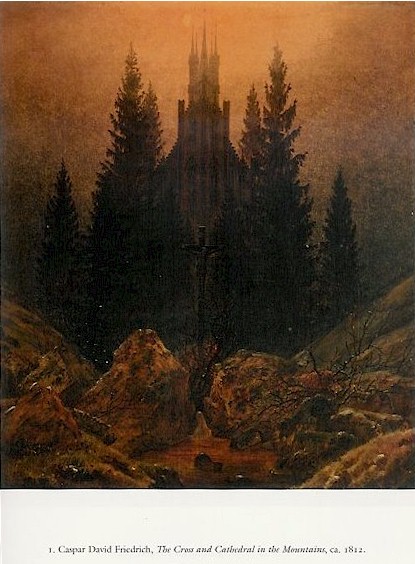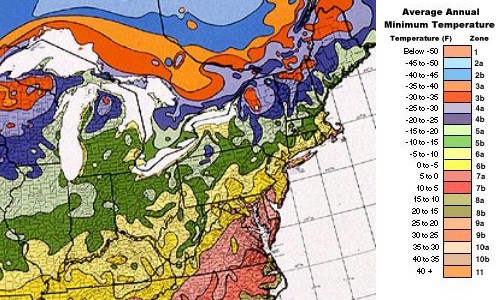 The Back of the Napkin, by Dan Roam “Visual thinking means taking innate advantage of our ability to see, with our eyes and our mind’s eye, in order to discover ideas, develop those ideas quickly and intuitively, and share those ideas with others in a way that they simply ‘get'” This book is a brilliant elaboration on Bill Buxton’s idea of sketching, with a catch. The brilliance is in the simplicity and elegance of the model:
This may seem a bit cryptic, but a single read through the book and this is all you need to use this powerful technique for both solving (or at least coming to grips with) problems, and getting buy-in for your solution. The catch? The drawings in the book are simple but beautiful. Doing this well takes lots of practice, both in conveying your meaning graphically (the expressions on your stick men, and their poses, are critical to the audience’s appreciation and understanding), and in using this technique to solve seemingly intractable problems. I intend to try it, but I’m so poor at drawing that it will take me a long time to get my sketches right. Fortunately, I’m really good at imagining possibilities, so my only problem with the technique will be my artwork. Really recommended. If the entire history of landscape in the West is indeed just a mindless race toward a machine-driven universe, uncomplicated by myth, metaphor and allegory, where measurement not memory is the absolute arbiter of value, where our ingenuity is our tragedy, then we are indeed trapped in the engine of our self-destruction. At the heart of this book is the stubborn belief that this is not, in fact, the whole story.
Many of the stories he tells are rooted in his own ancestors’ stories, and the book is intensely personal. He takes us through millennia of passion for nature and place, and our apparent fear and loathing of it. But right up to modern times this ambivalent relationship and “being-a-part ness” still resonates, he says: The designation of the suburban yard as the cure for the afflictions of city life marks the greensward as a remnant of the old pastoral dream, even though its goatherds and threshers have been replaced by tanks of pesticide and industrial strength mowing machines.
I was not impressed by his arguments, which seem somewhat nostalgic to me, in this age of relentless and ruthless ecocide. But he is an amazing story-teller, and teller of the stories and lessons of history, and the book is compelling even when it is not persuasive. Even more compelling are the stunning artworks which run through the whole book, such as the one above, that argue much more powerfully than words the inseparability of human spirituality from our love of and roots in nature. The book is an armchair visit to a vast science and history museum, and its stories of human altruism, savagery and struggle to live within and without nature, rootless and yet inexorably drawn to place, to home, stay with you a long time.
What is most remarkable about this exhaustive and practical course in temperate climate (zones 4-7) permaculture is that only about 40 of its over 1000 pages are about the work of planting and maintaining an “edible forest garden” (“a perennial polyculture of multipurpose [native] plants”); the rest is understanding what to plant, when, and why. The whole idea of these gardens is to enable you to harvest an abundance of varied foodstuffs with almost no maintenance. The theory takes up the whole first volume and needs every page. The challenge, you see, is that even what we might perceive as ‘wilderness’ is in fact nothing of the sort. Humans, right back to First Nations thousands of years ago, have utterly altered the vegetation that now looks so wild and ‘natural’. On top of that, climate change has, since the ice ages, been continuously changing what grows where. In order to allow nature to provide you, effortlessly year after year, a harvest of abundance, you first need to discover what naturally grew and what naturally will grow where you live. You need to study the botanical history of your home. Then, since it cannot be quickly ‘restored’ to natural, sustainable state (succession goes through many long intermediary stages and can take centuries to achieve equilibrium), you need to be smart enough to plan for a 20-30 year ‘hurry-up succession’ that will chivy the process along. You have to plant in stages, knowing that early stages are just preparing the soil, the ecosystem and the ground cover and canopy for later stages, and that some of the first things you plant won’t be around at the end of the succession at all if you’ve done your job right. This takes serious knowledge and study, a lot of patience and relearning what our ancestors learned as a matter of course. It’s in many ways a course in what Derrick Jensen has called “listening to the land”. There probably isn’t anything you could learn that would be more important, for your soul, for your community, for your resilience in the coming age of climate change and other disasters that will require us all to become much more self-sufficient than we are today. Start now, and when cascading economic, social and ecological catastrophes hit us in the 2030s and bring existing food production and other systems to their knees, you’ll be ready to gather the fruits ofyour labour. Category: Activism: What You Can Do
|
Navigation
Collapsniks
Albert Bates (US)
Andrew Nikiforuk (CA)
Brutus (US)
Carolyn Baker (US)*
Catherine Ingram (US)
Chris Hedges (US)
Dahr Jamail (US)
Dean Spillane-Walker (US)*
Derrick Jensen (US)
Dougald & Paul (IE/SE)*
Erik Michaels (US)
Gail Tverberg (US)
Guy McPherson (US)
Honest Sorcerer
Janaia & Robin (US)*
Jem Bendell (UK)
Mari Werner
Michael Dowd (US)*
Nate Hagens (US)
Paul Heft (US)*
Post Carbon Inst. (US)
Resilience (US)
Richard Heinberg (US)
Robert Jensen (US)
Roy Scranton (US)
Sam Mitchell (US)
Tim Morgan (UK)
Tim Watkins (UK)
Umair Haque (UK)
William Rees (CA)
XrayMike (AU)
Radical Non-Duality
Tony Parsons
Jim Newman
Tim Cliss
Andreas Müller
Kenneth Madden
Emerson Lim
Nancy Neithercut
Rosemarijn Roes
Frank McCaughey
Clare Cherikoff
Ere Parek, Izzy Cloke, Zabi AmaniEssential Reading
Archive by Category
My Bio, Contact Info, Signature Posts
About the Author (2023)
My Circles
E-mail me
--- My Best 200 Posts, 2003-22 by category, from newest to oldest ---
Collapse Watch:
Hope — On the Balance of Probabilities
The Caste War for the Dregs
Recuperation, Accommodation, Resilience
How Do We Teach the Critical Skills
Collapse Not Apocalypse
Effective Activism
'Making Sense of the World' Reading List
Notes From the Rising Dark
What is Exponential Decay
Collapse: Slowly Then Suddenly
Slouching Towards Bethlehem
Making Sense of Who We Are
What Would Net-Zero Emissions Look Like?
Post Collapse with Michael Dowd (video)
Why Economic Collapse Will Precede Climate Collapse
Being Adaptable: A Reminder List
A Culture of Fear
What Will It Take?
A Future Without Us
Dean Walker Interview (video)
The Mushroom at the End of the World
What Would It Take To Live Sustainably?
The New Political Map (Poster)
Beyond Belief
Complexity and Collapse
Requiem for a Species
Civilization Disease
What a Desolated Earth Looks Like
If We Had a Better Story...
Giving Up on Environmentalism
The Hard Part is Finding People Who Care
Going Vegan
The Dark & Gathering Sameness of the World
The End of Philosophy
A Short History of Progress
The Boiling Frog
Our Culture / Ourselves:
A CoVid-19 Recap
What It Means to be Human
A Culture Built on Wrong Models
Understanding Conservatives
Our Unique Capacity for Hatred
Not Meant to Govern Each Other
The Humanist Trap
Credulous
Amazing What People Get Used To
My Reluctant Misanthropy
The Dawn of Everything
Species Shame
Why Misinformation Doesn't Work
The Lab-Leak Hypothesis
The Right to Die
CoVid-19: Go for Zero
Pollard's Laws
On Caste
The Process of Self-Organization
The Tragic Spread of Misinformation
A Better Way to Work
The Needs of the Moment
Ask Yourself This
What to Believe Now?
Rogue Primate
Conversation & Silence
The Language of Our Eyes
True Story
May I Ask a Question?
Cultural Acedia: When We Can No Longer Care
Useless Advice
Several Short Sentences About Learning
Why I Don't Want to Hear Your Story
A Harvest of Myths
The Qualities of a Great Story
The Trouble With Stories
A Model of Identity & Community
Not Ready to Do What's Needed
A Culture of Dependence
So What's Next
Ten Things to Do When You're Feeling Hopeless
No Use to the World Broken
Living in Another World
Does Language Restrict What We Can Think?
The Value of Conversation Manifesto Nobody Knows Anything
If I Only Had 37 Days
The Only Life We Know
A Long Way Down
No Noble Savages
Figments of Reality
Too Far Ahead
Learning From Nature
The Rogue Animal
How the World Really Works:
Making Sense of Scents
An Age of Wonder
The Truth About Ukraine
Navigating Complexity
The Supply Chain Problem
The Promise of Dialogue
Too Dumb to Take Care of Ourselves
Extinction Capitalism
Homeless
Republicans Slide Into Fascism
All the Things I Was Wrong About
Several Short Sentences About Sharks
How Change Happens
What's the Best Possible Outcome?
The Perpetual Growth Machine
We Make Zero
How Long We've Been Around (graphic)
If You Wanted to Sabotage the Elections
Collective Intelligence & Complexity
Ten Things I Wish I'd Learned Earlier
The Problem With Systems
Against Hope (Video)
The Admission of Necessary Ignorance
Several Short Sentences About Jellyfish
Loren Eiseley, in Verse
A Synopsis of 'Finding the Sweet Spot'
Learning from Indigenous Cultures
The Gift Economy
The Job of the Media
The Wal-Mart Dilemma
The Illusion of the Separate Self, and Free Will:
No Free Will, No Freedom
The Other Side of 'No Me'
This Body Takes Me For a Walk
The Only One Who Really Knew Me
No Free Will — Fightin' Words
The Paradox of the Self
A Radical Non-Duality FAQ
What We Think We Know
Bark Bark Bark Bark Bark Bark Bark
Healing From Ourselves
The Entanglement Hypothesis
Nothing Needs to Happen
Nothing to Say About This
What I Wanted to Believe
A Continuous Reassemblage of Meaning
No Choice But to Misbehave
What's Apparently Happening
A Different Kind of Animal
Happy Now?
This Creature
Did Early Humans Have Selves?
Nothing On Offer Here
Even Simpler and More Hopeless Than That
Glimpses
How Our Bodies Sense the World
Fragments
What Happens in Vagus
We Have No Choice
Never Comfortable in the Skin of Self
Letting Go of the Story of Me
All There Is, Is This
A Theory of No Mind
Creative Works:
Mindful Wanderings (Reflections) (Archive)
A Prayer to No One
Frogs' Hollow (Short Story)
We Do What We Do (Poem)
Negative Assertions (Poem)
Reminder (Short Story)
A Canadian Sorry (Satire)
Under No Illusions (Short Story)
The Ever-Stranger (Poem)
The Fortune Teller (Short Story)
Non-Duality Dude (Play)
Your Self: An Owner's Manual (Satire)
All the Things I Thought I Knew (Short Story)
On the Shoulders of Giants (Short Story)
Improv (Poem)
Calling the Cage Freedom (Short Story)
Rune (Poem)
Only This (Poem)
The Other Extinction (Short Story)
Invisible (Poem)
Disruption (Short Story)
A Thought-Less Experiment (Poem)
Speaking Grosbeak (Short Story)
The Only Way There (Short Story)
The Wild Man (Short Story)
Flywheel (Short Story)
The Opposite of Presence (Satire)
How to Make Love Last (Poem)
The Horses' Bodies (Poem)
Enough (Lament)
Distracted (Short Story)
Worse, Still (Poem)
Conjurer (Satire)
A Conversation (Short Story)
Farewell to Albion (Poem)
My Other Sites






